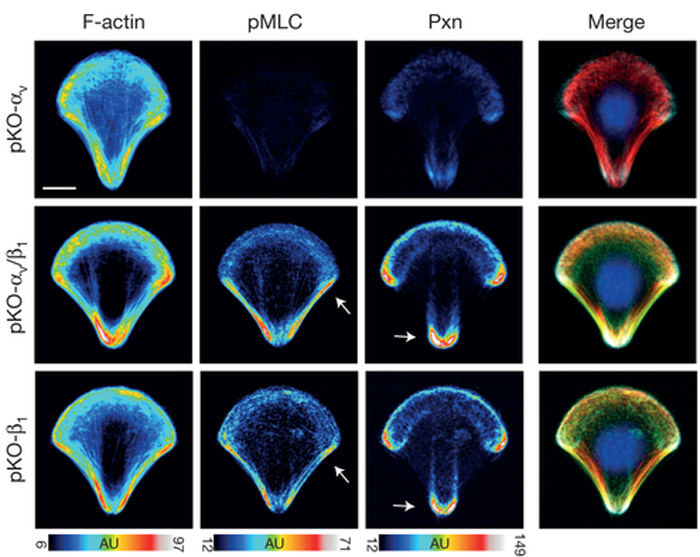Maybe you’ve been cruising in your minivan blasting “The Wheels on the Bus” too loudly for your preschooler, or maybe you’re preparing to hear the witching hour’s cries of a newborn due soon (this blog is way too autobiographical). Either way, our ears endure a lot of stress from loud sounds throughout our lives. The images above are from a paper describing a mechanism for handling this stress.
Our inner ear hair cells detect sound when stereocilia projections are deflected by sound vibrations. These actin-based projections are connected to each other by tiny extracellular tip links, which are tugged when the stereocilia bend. The tugging of these tip links is believed to drive the opening of transduction channels that result in the electrical signals relayed to the auditory nerve. Although mammalian hair cells do not regenerate over the course of a lifetime, the tip links do. A recent paper investigates the mechanism behind tip link regeneration. Indzhykulian and colleagues developed an electron microscopy technique to visualize the tip links on hair cell stereocilia and immuno-gold labeled proteins of tip links, and found a two-step mechanism for tip link regeneration. This mechanism begins with shorter tip links composed of just protocadherin 15, and follows with mature tip links containing protocadherin 15 and cadherin 23. In the images above, stereocilia tip links were regenerated after nearly complete tip disruption by the chemical BAPTA. Insets show higher magnified views of the tip links, which appear regenerated by 24-48 hours, compared with control tip links (top) and BAPTA-treated cells (second row).




